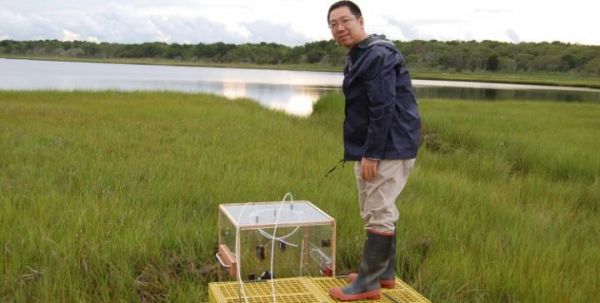Coastal wetlands provide stunning views and are hosts to a vast biodiversity. But they provide another service to the warming Earth: they capture carbon from the atmosphere and sequester it in their sediment at high rates. In the United States alone, coastal wetlands can offset the yearly carbon dioxide emissions from 800,000 cars. But as sea level rises with climate change, will coastal wetlands be overwhelmed, or will they retain their power as carbon sinks?
New research from the Marine Biological Laboratory demonstrates that the wetlands will prevail. “We found even though sea level will continue to rise at different rates [from location to location], sediment accrual rates in coastal wetlands will outpace sea level rise, ” says MBL Ecosystems Center scientist Jianwu (Jim) Tang, senior author on the study, published in Nature Communications.
More importantly, the carbon sequestered in coastal wetlands will stay locked away as new sediment deposits on top, allowing the marshland to act as a vault for excess carbon in the environment, the study found.
Although coastal wetlands cover only about 2 percent of the ocean surface, they are estimated to sequester more than 50 percent of the carbon captured by the ocean per year. And they fix carbon in their sediments at rates 10 to 100 times higher than forests.
Read more at Marine Biological Laboratory
Image: Jianwu Tang measures greenhouse gas emissions from a salt marsh on Cape Cod, Massachusetts in 2013. (Credit: Jianwu Tang)


